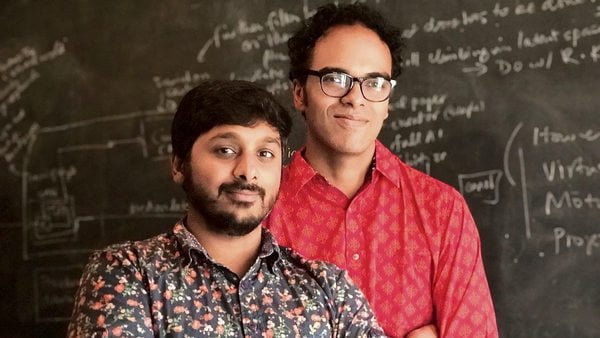
On 15 June, the ballroom at St Regis hotel, Mumbai, transformed into a gaming room. Titled Game Of Tomorrow, this experiential simulation game brought art out of the traditional gallery space into the realm of finance and investment. In a first of sorts, one saw artists curating a game and performance art piece for a finance conference, FutureBets, hosted by Ashika Group, an Indian financial services firm.
Some 75-80 traders were divided into teams and asked to respond to the rapidly changing environment within the game, where the world began in 2019 and ended in 2040. The scenario would change every 5 minutes—in terms of policies, natural disasters, international relations, climatic fluctuations, and more—and the players were required to base their trading decisions on these events. These cues were presented to the players in the form of performance art, social media posts, stand-up comedy acts, visual design, images, radio announcements and short films.
Conceived by Bengaluru-based curation and technology research collective, 64/1, Game Of Tomorrow features the work of experience designers like Janet Pandian, playwrights, economists, educators like Nihal Ahmed, founder of the Limitless Institute that untaps human potential through modular programmes, and stand-up artists such as Alrex Romer. The creators believe that the role of the artist in the 21st century is very different and that they need to be involved in a public dialogue about the way the future is going to be built, rather than remaining isolated from it. “We feel strongly about getting artists involved in non-traditional spaces. Otherwise museums and galleries end up becoming mere echo chambers,” says Karthik Kalyanaraman, a former professor of econometrics at University College London, who co-founded 64/1 with Raghava K.K., a multidisciplinary artist. Together, they curated the first group show of Artificial Intelligence art, Gradient Descent, which was shown at Nature Morte, Delhi, in September.
It was at this exhibition that Chirag Jain, CEO of the Ashika Capital, met them and decided to enlist 64/1’s help in offering a fresh perspective to traders about how issues such as climate change, biohacking, the rise of AI, and more, are likely to affect investment decisions. “We live in such dynamic times. Facebook is launching a cryptocurrency called Libra. Until some time ago, blockchain was unheard of. In India, cryptocurrency is still banned. So, how will all these events affect the market and the various industries? An immersive experience such as Game Of Tomorrow will help traders relate to these issues better and in a fun way,” says Jain.
The experimental game envisages scenarios such as banks becoming irrelevant with the advent of payment services like Google Pay, the impact of water scarcity on real estate and the rise of plant-based meat substitutes to combat food shortage. “The game also brings home the fact that what we thought was a distant future is, in fact, more immediate,” says Kalyanaraman.

The game, which is played over one-and-a-half hours, took over three months to design. It helped that team members such as Ahmed had worked as futurists in the past. “I worked in Canada with government bodies, think tanks, authors, artists and corporations, helping them imagine what future scenarios would look like,” says Ahmed, who created “time machines” as part of the Experiencing Futures programme. The room would be transformed to mimic a scenario from, say, 2035, complete with sights, sounds and smells. “You could give a white paper on what an industry would look like in 10 years. But when you have an immersive experience to touch and feel the future, the impact is much more,” he says.
For Game Of Tomorrow, the team created fake currency, newspaper articles from the future, social media posts, visual art and videos. There were even unpredictable skits, such as strangers barging into the room. “Some of these were red herrings, others were distractions, and some were clues. At the end, the person who had really paid attention to the nuances and built up the highest portfolio, won. We had a 75-year-old retired gentleman who ranked second,” says Ahmed. The game also helped traders look at investments for a better future, such as in bioprinting organs, growing cotton with less water, and sustainable food.
The team created scenarios, based on data analysed by Kalyanaraman, and how these would affect a company or an industry. The level of detailing was minute, with logos, company profiles and a rich media created around fictitious companies that players were supposed to trade around. “For each clue and nuance, we discussed which art form would be more suitable—a video, a photo, performance art, or any other,” says Ahmed.
The game, a work-in-progress, is being updated to incorporate the changes in policy, politics and environment. According to Kalyanaraman, a special version, focusing just on the ramifications of climate change, might be on the anvil. “A digital version is also being planned. Also, Ashika Group wants to carry this forward. So, in the next three months, we will do four mini salons and two bigger versions in India and abroad,” he says.
[“source=livemint”]





